Table of Contents
An exhibition in Copenhagen showcases do the job by students who have been instructed to create initiatives for intense environments in order to come up with first structure remedies not influenced by “castle in the sky” builds and architecture blogs.
Named New Techniques for Big Troubles: Architecture and Extraordinary Environments, the exhibition was commissioned for this year’s ongoing Copenhagen Architecture Pageant (CAFx).
It was curated by David Garcia, founder of community studio MAP Architects and an associate professor at the Royal Danish Academy‘s architecture and engineering institute, wherever he teaches a masters training course titled Architecture and Excessive Environments.
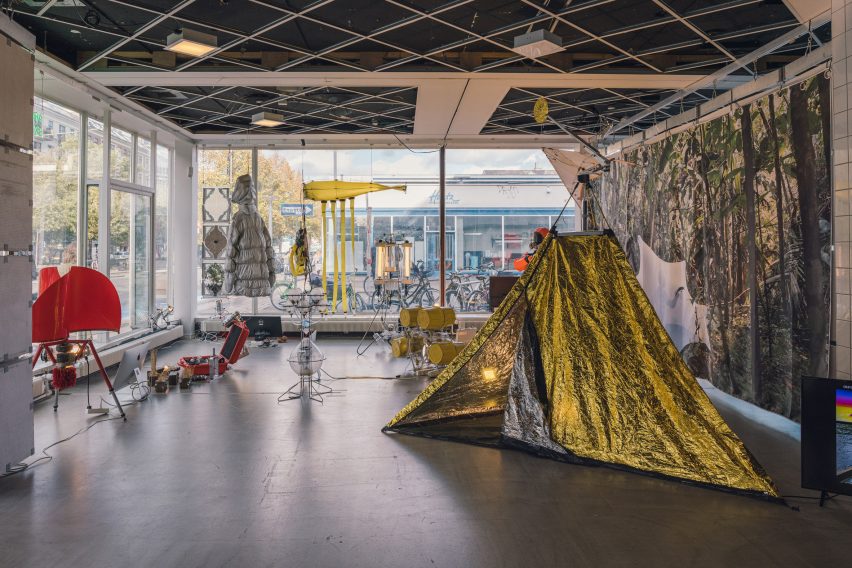
The exhibition showcases the result of students’ perform on the programme, which sees them reside and function for months in severe destinations these types of as Alaska and the Gobi Desert.
There they should seek to construct and test style and design prototypes that gain the communities dwelling in these hard environments by harnessing the methods readily available and collaborating with neighborhood men and women.
Garcia mentioned the purpose of the program, as very well as responding to climate alter, is to give the learners no decision but to create primary architecture – with no the temptation to duplicate what they see on the web.
“I required to make my learners start off in a extremely tricky spot exactly where there is no precedent, pushing them to an extraordinary context so they have to assume anew,” he informed Dezeen.
“It is partly based on the concept that it is tricky for pupils to different them selves from the visuals they see on the architecture weblogs. These internet websites have an massive effects on pupils, who crave inspiration, but it can be overwhelming as there is so substantially conveniently out there.”
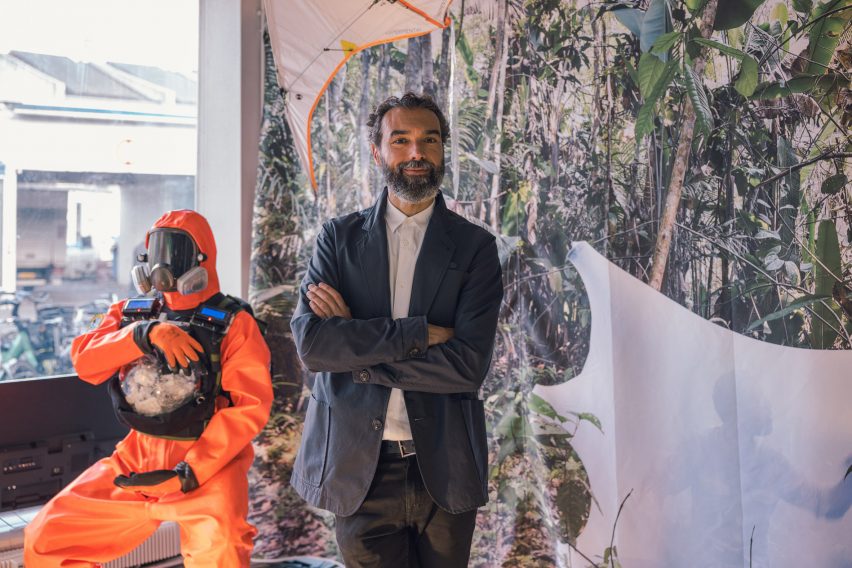
He additional that his possess working experience working on huge-funds projects for rich clientele even though at significant British architecture organization Foster + Partners was behind the conception of the course.
“I expended several a long time designing castles in the sky and that was pivotal in coming up with this programme,” he stated.
“I realised that from a source point of view, and from the issue of watch of resolving the world’s issues it was absurd. I am incredibly vital of those people styles of tasks even with obtaining labored on them myself in the previous.”
The exhibition starts with blown-up variations of pamphlets manufactured by MAP Architects discovering concepts for architecture in destinations like Antarctica, Chernobyl, or the Earth’s orbit.
For instance, just one pamphlet implies that Antarctica’s frequent excessive cold be applied to great seeds in a Environment Seed Bank, as an substitute to the centre in the Arctic’s Svalbard the place air conditioning is in some cases essential because of to temperature fluctuation.
Amongst the initiatives featured in the key exhibition is a desalination device manufactured by a student placed with an Inuit community in the Bering Strait, wherever only saltwater is easily obtainable.
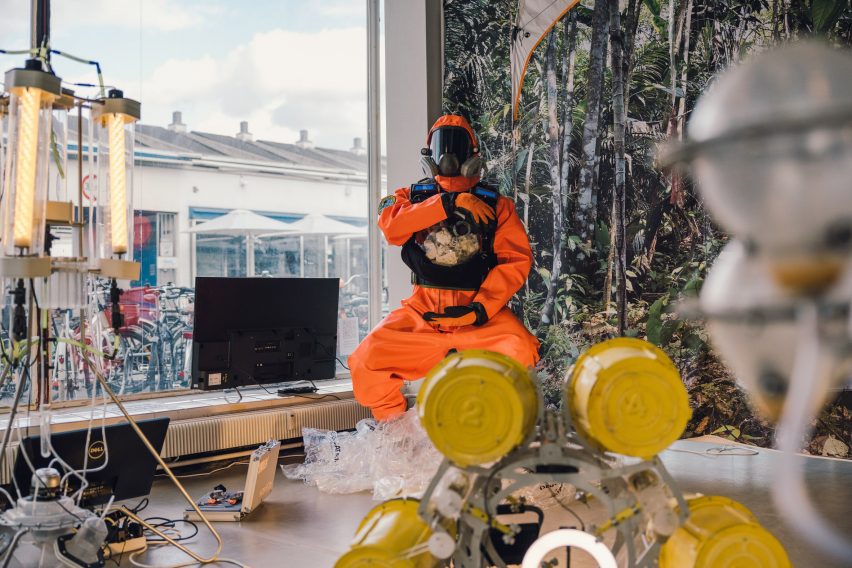
The student’s investigate uncovered that thawing saltwater ice in the beginning provides drinkable h2o, as this melts speedier than saline.
By way of a sequence of tubes and chambers, the system normally takes a block of saltwater ice and transforms it into a glass of fresh h2o right away that can be drunk in the morning.
In the meantime, the orange Inxect match by Pavel Liepins aims to tackle problems of plastic air pollution and foods security in the Faroe Islands.
It channels human body warmth and humidity generated by motion into an connected habitat for plastic-taking in mealworms, which are non-harmful to humans and rich in protein.
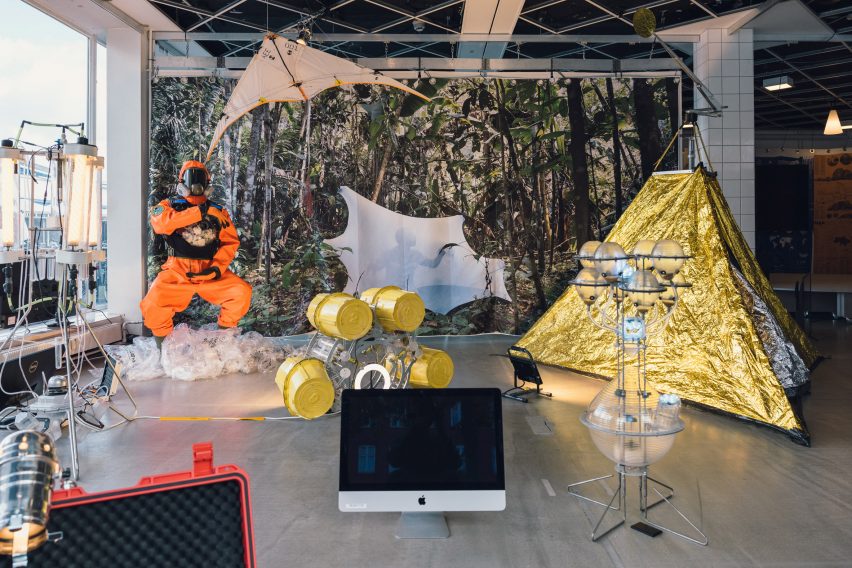
Some reveals play with resources, this sort of as an insulation merchandise produced out of pine needles by a scholar positioned in Alaska and a approach for creating bricks from sand by a college student despatched to China’s Gobi Desert by Gabriele Jerosine.
Not all the projects labored effectively, together with a system supposed to wrap all around the stilts of properties in flood-susceptible Manaus, Brazil, to develop tidal energy, which proved to be overcomplicated and much too fragile to function.
“Personally I really don’t treatment whether or not their experiments function or not, and I do not have a particular aesthetic that I seem for which is not as relevant to me, I might like the students to explore their have aesthetics,” explained Garcia.
“What I treatment about is that the students are working with the aim of enhancing the atmosphere in thoughts, and undertaking so in a way that is distinctive to them,” he added.
Garcia’s own function also features, in the form of a passive heating tent designed for the Atacama Desert in Chile where temperatures get extremely significant through the day but drop radically at night.
The tent takes advantage of a self-activating piston to expose a adhere of soapstone, an successful thermal accumulation material, to the sunlight to be heated for the duration of the working day right before staying withdrawn into the tent at night time where by it steadily radiates warmth to give heat.
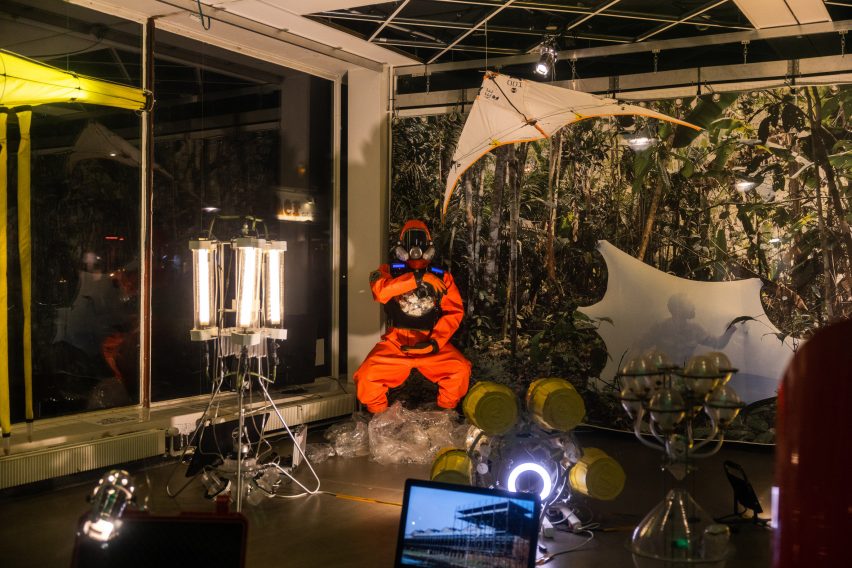
Some assignments made by learners on the study course – which has an ingestion of involving 20 and 25 each and every yr – have worked so well that they have been remaining for use by the group.
1 this sort of instance is a job that made use of urine’s electrolyte attributes to energy a bathroom mild in rural Zanzibar, to permit women of all ages to experience harmless applying it at night time.
New Solutions for Major Difficulties: Architecture and Extraordinary Environments is getting held in CAFx’s area at Halmtorvet 27 in Copenhagen’s Meatpacking District and runs until eventually 20 November.
Copenhagen Architecture Festival is jogging a collection of functions across Copenhagen and Aarhus, generally in between 6 and 16 Oct 2022. See Dezeen Events Guide for an up-to-date record of architecture and structure activities having area all around the globe.
The images is by Francesco Martello.
